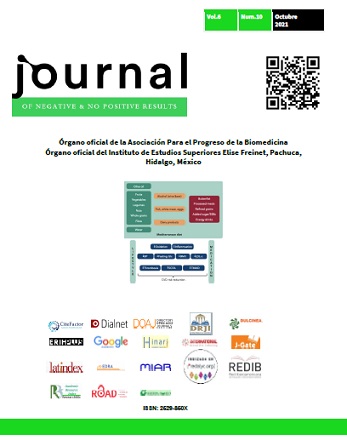Meningoangiomatosis: about a case review of findings in neuroimaging
DOI:
https://doi.org/10.19230/jonnpr.4174Keywords:
Angiography, Computed Tomography, Leptomeningeal Angiomatosis, Magnetic Resonance Imaging, Meningioangiomatosis, Seizure CrisisAbstract
Meningoangiomatosis is a rare and benign intracranial affectation, affecting mainly leptomeninges and the underlying cerebral cortex, being more frequent in children and young adults. Although most of the cases are presented in an isolated way, it has been described its association with syndromes such as neurofibromatosis type 2, these last ones more frequently asymptomatic and with good pharmacological response; however, the sporadic presentations present a wide clinical spectrum, ranging from chronic headaches to refractory convulsive crisis, even being associated to intracranial lesions such as meningiomas.
In this article we present our experience with a young patient who debuted with an episode of focal motor epileptic seizure with generalized tonic-clonic evolution and good response to antiepileptic treatment.
Given the high unspecificity associated with this pathology, both clinical and radiological, our aim is to synthesize the radiological findings that allow us the diagnostic approach of this entity in clinically compatible patients.
Downloads
References
Wang Y, Gao X, Yao ZW Y, et al. Histopathological study of five cases with sporadic meningioangiomatosis. Neuropathology 2006; 26(3): 249-56.
Kashlan ON, LaBorde DV, Davison L, Saindane AM, Brat D, Hudgins PA, Gross RE. Meningioangiomatosis: a case report and literature review emphasizing diverse appearance on different imaging modalities. Case Rep Neurol Med 2011;2011.
Suarez-Gauthier A, Gómez BM, García-García E, Hinojosa J, Ricoy JR. Meningioangiomatosis: Descripción de dos casos y revisión de la literatura. Neurocirugía 2006; 17: 250–254.
Jeon TY, Kim JH, Suh YL, Ahn S, Yoo SY, Eo H. Sporadic meningioangiomatosis: imaging findings with histopathologic correlations in seven patients. Neuroradiology 2013; 55: 1439–1446
Tsitouridis J, Stamos S, Demertzis J, Nikolopoulos P. Cerebral Leptomeningeal Angiomatosis CT and MRI evaluation. Rivista di Neuroradiologia 1998; 11 (4): 463-470.
Partington CR, Graves VB, Hegstrand LR. Meningioangiomatosis. American Journal of Neuroradiology 1991; 12(3): 549–552.
Arcos A, Serramito R, Santin JM, et al. Meningioangiomatosis: clinical-radiological features and surgical outcome. Neurocirugía 2010; 21(6): 461–466.
Wiebe S, Munoz DG, Smith S, Lee DH. Meningioangiomatosis. A comprehensive analysis of clinical and laboratory features. Brain 1999; 122: 709–726.
Published
Issue
Section
License
All accepted originals remain the property of JONNPR. In the event of publication, the authors exclusively transfer their rights of reproduction, distribution, translation and public communication (by any sound, audiovisual or electronic medium or format) of their work. To do so, the authors shall sign a letter transferring these rights when sending the paper via the online manuscript management system.
The articles published in the journal are freely used under the terms of the Creative Commons BY NC SA license, therefore.
You are free to:
Share — copy and redistribute the material in any medium or format
Adapt — remix, transform, and build upon the material
The licensor cannot revoke these freedoms as long as you follow the license terms.
Under the following terms:
Attribution — You must give appropriate credit, provide a link to the license, and indicate if changes were made. You may do so in any reasonable manner, but not in any way that suggests the licensor endorses you or your use.
NonCommercial — You may not use the material for commercial purposes.
ShareAlike — If you remix, transform, or build upon the material, you must distribute your contributions under the same license as the original.
No additional restrictions — You may not apply legal terms or technological measures that legally restrict others from doing anything the license permits.

This work is licensed under a Creative Commons Attribution-NonCommercial-ShareAlike 4.0 International License

























